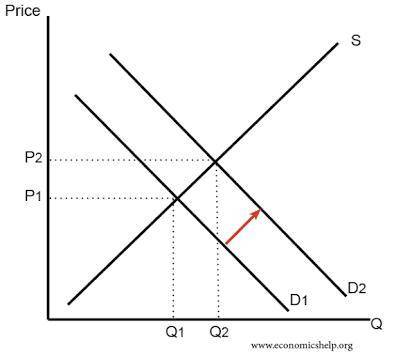
Business, 12.08.2020 06:01 jmeza502506
Assume a purely competitive decreasing-cost industry is initially in long-run equilibrium but then there is a decrease in market demand for the product. After all economic adjustments to this new situation have taken place, product price will be

Answers: 1
Another question on Business

Business, 22.06.2019 02:30
Consider how health insurance affects the quantity of health care services performed. suppose that the typical medical procedure has a cost of $160, yet a person with health insurance pays only $40 out of pocket. her insurance company pays the remaining $120. (the insurance company recoups the $120 through premiums, but the premium a person pays does not depend on how many procedures that person chooses to undergo.) consider the following demand curve in the market for medical care. use the black point (plus symbol) to indicate the quantity of procedures demanded if each procedure has a price of $160. then use the grey point (star symbol) to indicate the quantity of procedures demanded if each procedure has a price of $40. q d at p=$160 q d at p=$40 0 10 20 30 40 50 60 70 80 90 100 200 180 160 140 120 100 80 60 40 20 0 price of medical procedures quantity of medical procedures demand if the cost of each procedure to society is truly $160, the quantity that maximizes total surplus is procedures. economists often blame the health insurance system for excessive use of medical care. given your analysis, the use of care might be viewed as excessive because consumers get procedures whose value is than the cost of producing them.
Answers: 1

Business, 22.06.2019 17:00
During which of the following phases of the business cycle does the real gdp fall? a. trough b. expansion c. contraction d. peak
Answers: 2

Business, 22.06.2019 17:40
Solomon chemical company makes three products, b7, k6, and x9, which are joint products from the same materials. in a standard batch of 320,000 pounds of raw materials, the company generates 70,000 pounds of b7, 150,000 pounds of k6, and 100,000 pounds of x9. a standard batch costs $3,840,000 to produce. the sales prices per pound are $10, $14, and $20 for b7, k6, and x9, respectively. (a) allocate the joint product cost among the three final products using weight as the allocation base. (b) allocate the joint product cost among the three final products using market value as the allocation base. (c) allocate the joint product cost among the three final products using weight as the allocation base.
Answers: 3

Business, 22.06.2019 19:00
15. chef a insists that roux is the traditional thickener for bisque. chef b insists that it's rice. which chef is correct? a. neither chef is correct. b. both chefs are correct. c. chef b is correct. d. chef a is correct.
Answers: 1
You know the right answer?
Assume a purely competitive decreasing-cost industry is initially in long-run equilibrium but then t...
Questions


Mathematics, 21.11.2019 19:31

Social Studies, 21.11.2019 19:31





Mathematics, 21.11.2019 19:31


Mathematics, 21.11.2019 19:31

Mathematics, 21.11.2019 19:31

Mathematics, 21.11.2019 19:31

English, 21.11.2019 19:31



Biology, 21.11.2019 19:31



History, 21.11.2019 19:31

History, 21.11.2019 19:31




